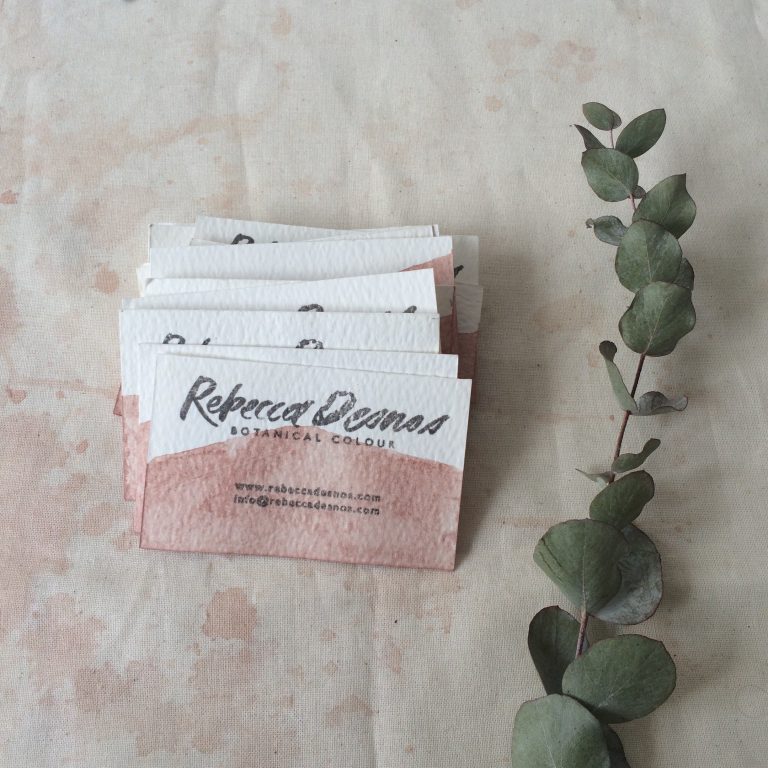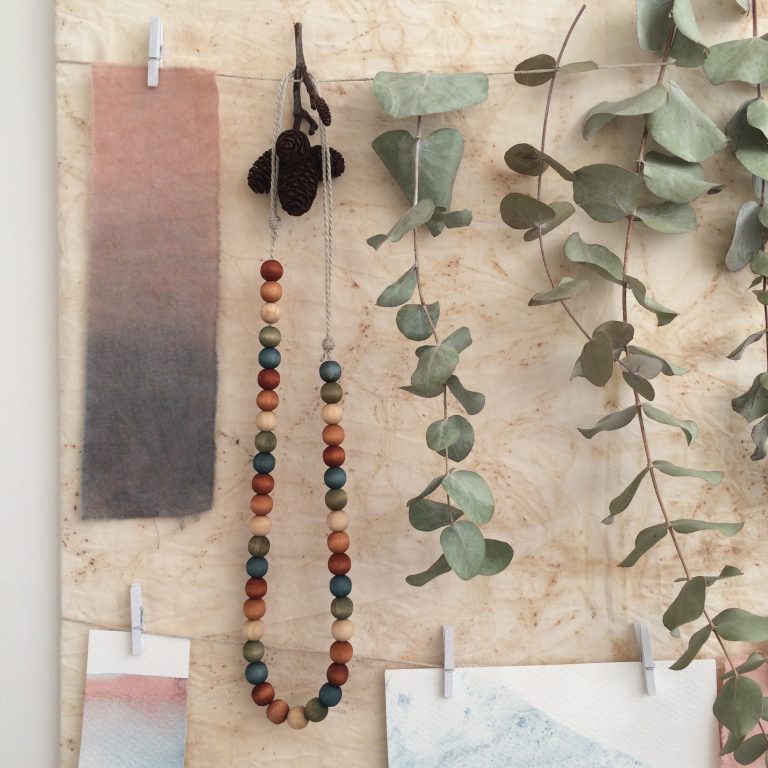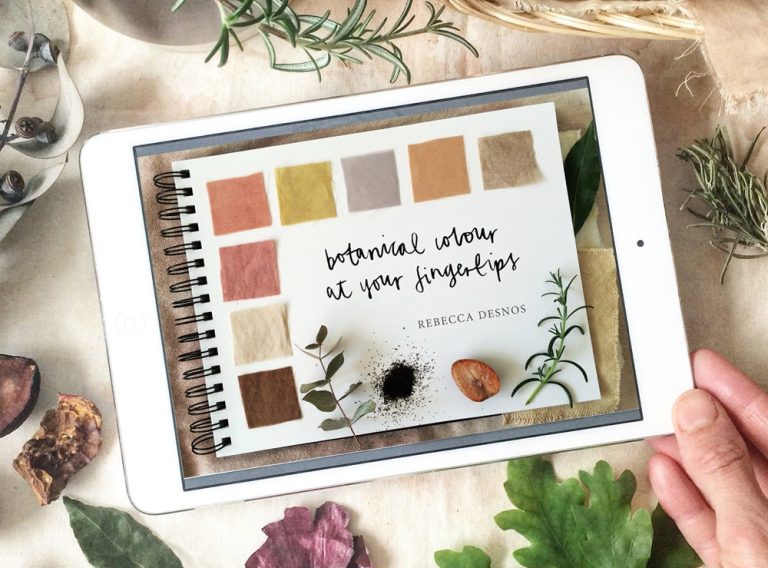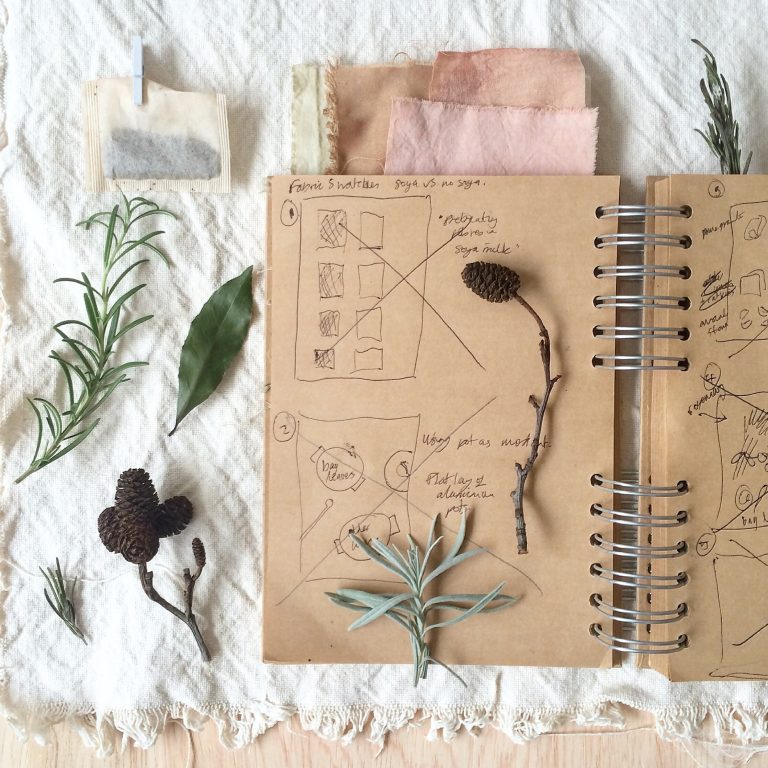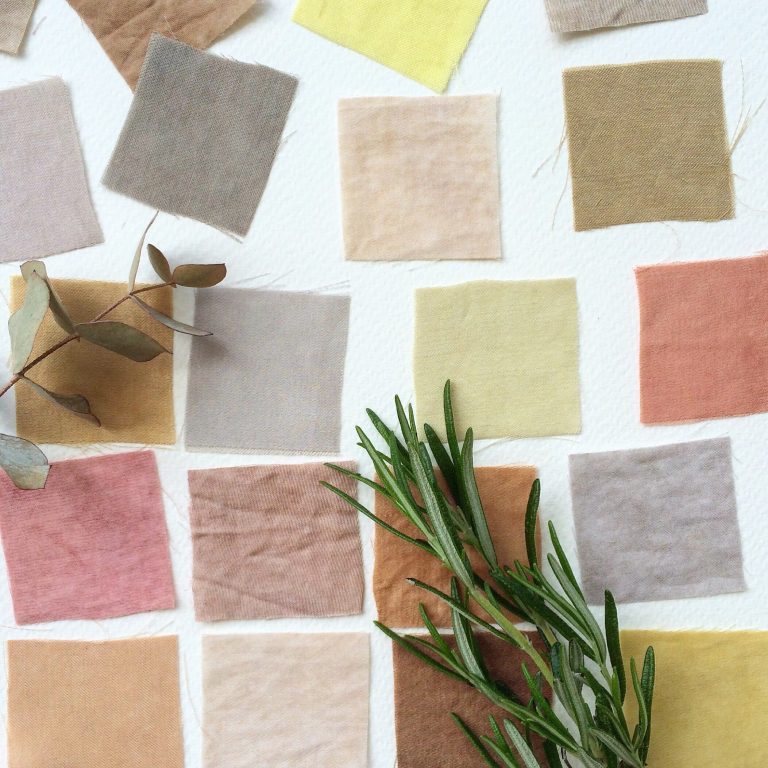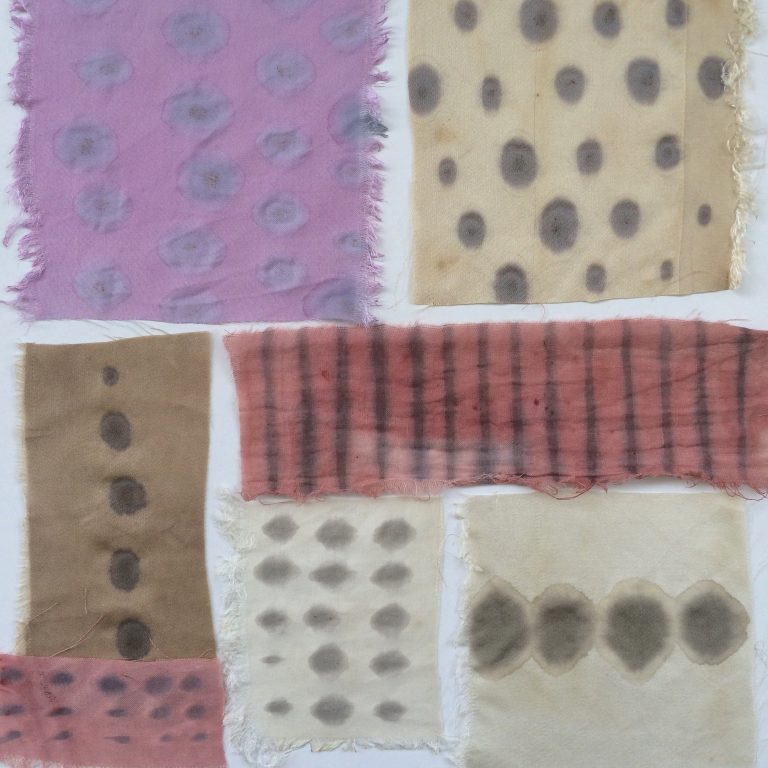In this blog post I’ll share with you the range of shades I made with red onion skins. Such a simple dye plant yields a wide range of colours. It never fails to amaze me!

The methods I use are from my book Botanical Colour at your Fingertips, which is available as a paperback and also a digital download. It’s an introductory guide to dyeing cellulose fabric and yarn with homemade plant dyes. Onion skins are one of the dye plants I use in my book. The dyeing methods can be adapted to suit whichever plants you have at your fingertips. In fact, I encourage you to experiment and learn to dye in an intuitive way.
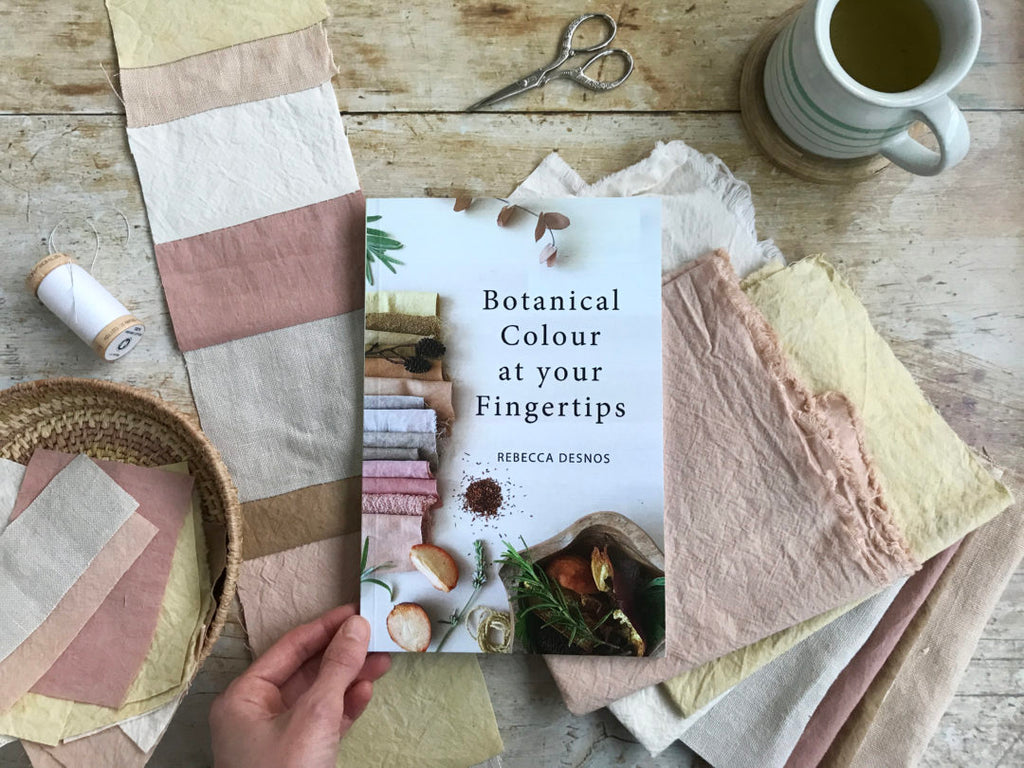
Ok, let’s get back to onion skin dyeing…
I used my usual aluminium dye pot which I like as aluminium produces bright colours and also the metal offers some mordanting benefit (it helps the dye bond to the fibres).
After simmering the onion skins for about 30 minutes then leaving them to soak for a few hours, I strained them out to leave a clear dye bath. I added some extra tap water so the fibres had enough depth to move around in the dye freely.
The first pot of dye produced exactly what I was expecting:
– Chartreuse green on unmordanted bamboo fabric.
– Dark brown on soya milk mordanted bamboo*
*Full details on mordanting with soya milk can be found in my eBook and paperback.
Then later that day, I decided to put some more unmordanted fabric in the pot and hopefully get green again, but I was surprised that by the following morning the fabric was a very beautiful shade of pale pink!
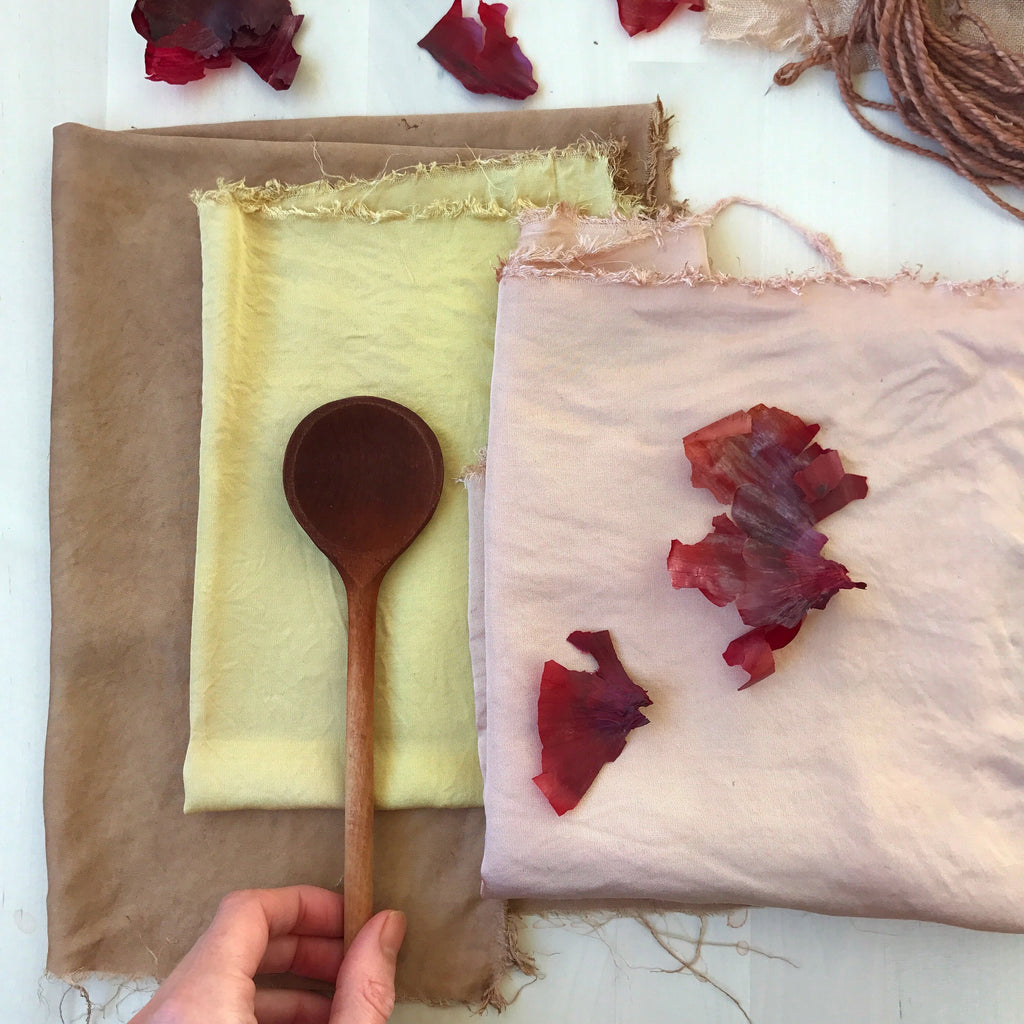
Brown: soya milk mordanted bamboo silk Chartreuse green (looks more golden in the photos): unmordanted bamboo silk Pink: unmordanted bamboo silk
I wonder if the dye particles that made the yellowy green had been used up on the previous fabric, so only pink particles were left. Or had there been a gradual change in the pH of the dye bath which shifted the colour? Had the soya milk protein on the other fabric contaminated the dye and affected the colour in some way? I had to experiment some more, and this time take note of pH levels.
So I made up another pot of red onion skin dye and separated it into two different lots. The first lot of liquid was used neat to dye a small swatch of unmordanted bamboo fabric. I wanted to see if I got a really dark green this time! I decided to check the pH level on this occasion and found that it was highly acidic with a pH of 1!! The dye was a deep maroon colour, and the fabric turned pink quickly, and over the course of a few hours became a very deep maroon colour. Unsurprisingly, the fabric is the same shade of dark pink as the onion skins 😉
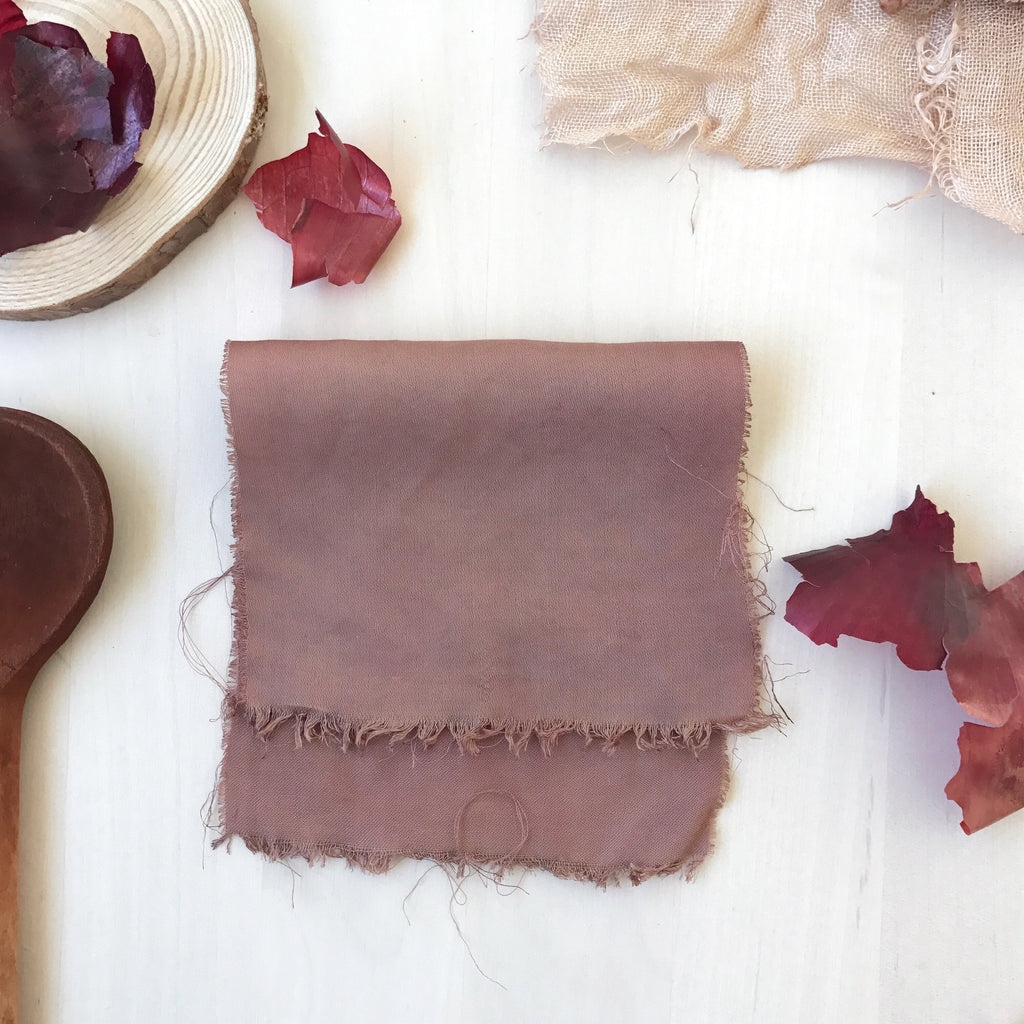
Unmordanted bamboo silk dyed in a concentrated onion skin dye bath (naturally pH 1)
The second lot of dye was diluted with tap water and the pH ended up being 7. The dye looked a paler shade of pink this time. I put in some unmordanted bamboo fabric and kept my fingers crossed for green, which is exactly what I got! So I can see now that the pH level of the dye determines which colour is produced. The dye still appeared pink, but the fabric actually dyed green. I took one piece of green fabric out of the dye pot, and left another piece in for longer. Surprisingly, as I peeked into the dye pot, this piece of fabric appeared to turn more pink as the day went on. The final result was more of a golden shade, but in real life it has a slightly rosy glow, as you can see below.
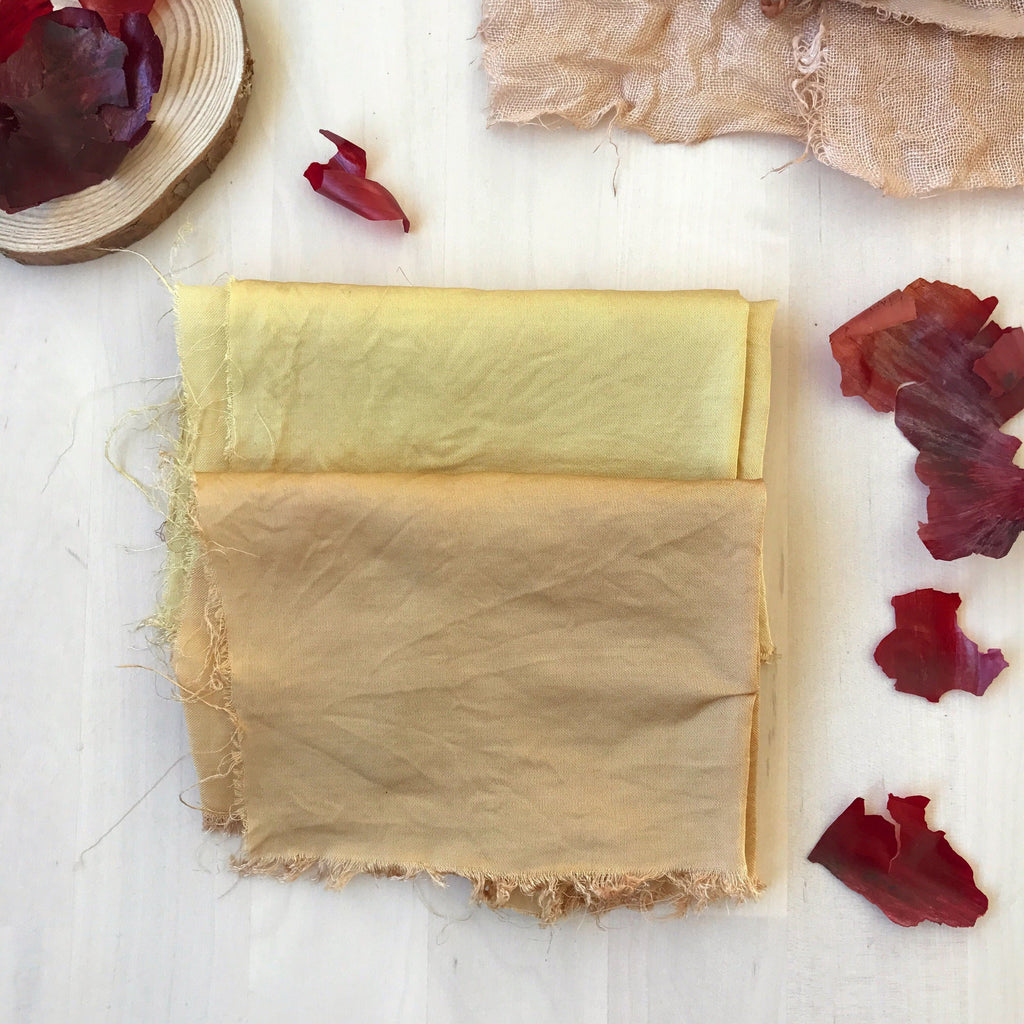
Both pieces of unmordanted bamboo fabric. The fabric at the top was taken out first, and the piece below was left for a few hours longer.
So I’ve discovered the pH levels have an effect on onion skin dye. But so does the protein level of the fabric; cellulose fabric dyes green, whereas soya milk mordanted fabric that contains protein dyes brown!
The slight mystery to me now is why did the fabric on the first day turn pale pink, since earlier on, an identical piece of fabric dyed green in the same pot. And the same appeared to happen on the second day, only this time I took the fabric out when it was more of a golden hue. It seems that ‘time’ is also a factor at play here; the longer the fabric is dyed, the pinker it becomes. I must repeat the same experiment again and test the pH at regular intevals. I didn’t do this the first time round as I didn’t realise the significance of pH for this dye stuff. I usually take a laid back approach and come back to my dye pot later, but on this occasion I want to find out exactly what is happening!
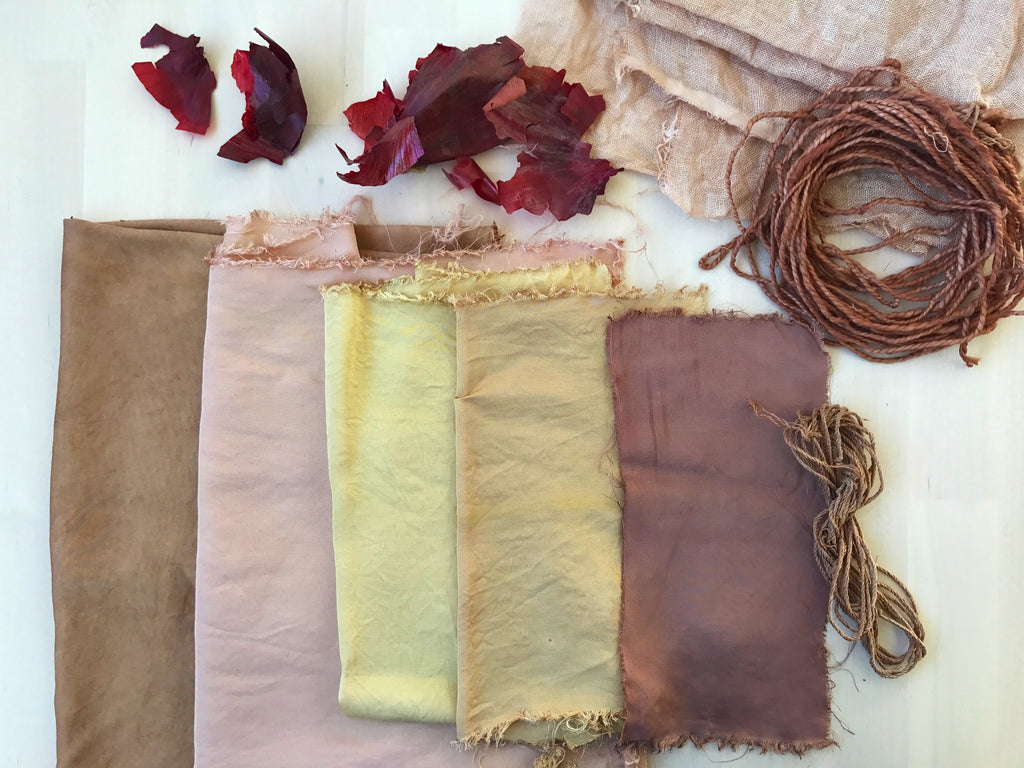
The range of shades from red onion skins on bamboo fabric. Also show: tencel yarn and unmordanted linen fabric above, and hemp cord on the right.
Undoubtedly, red onion skins are an amazing dye stuff and can produce a wide range of shades. And once again I’ve learnt that there’s always something new to discover about a plant, even if I’ve dyed with it before. This is what keeps me hooked on plant dyeing… It just feels like pure magic to me.
I’d love to hear about your experiences dyeing with onion skins in the comments below 🙂
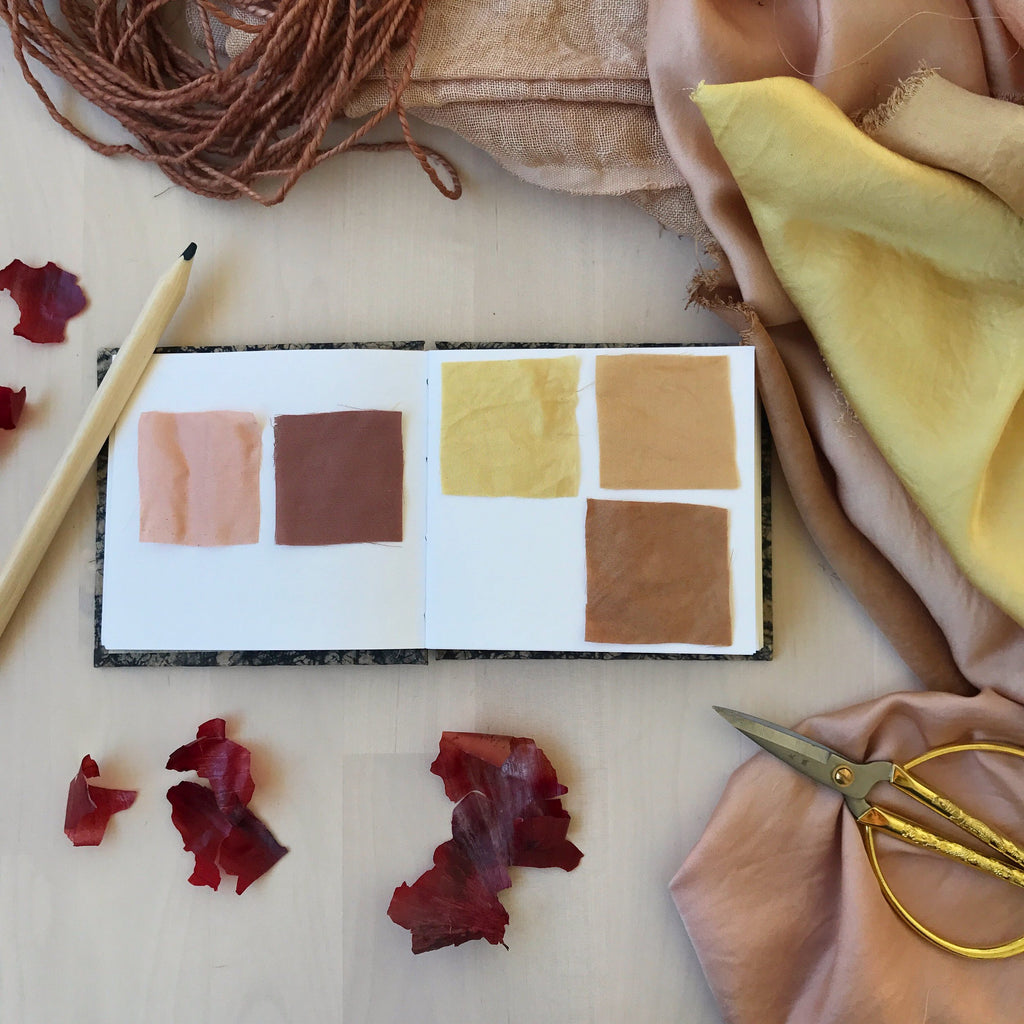
Fabric swatches in my handmade sketchbook from The Eloise Bindery
Notes:
- If you’d like to learn the basics of plant dyeing, my book (also available as an eBook) will take you through every step of the process.
- You will probably get different results on animal protein fibres like silk and wool. I’m vegan and don’t use these fibres, so can’t predict the colours, but it’s worth experimenting to find out!
- I actually got a different result on linen: pale pink when I was expecting light green! I know that cotton behaves in the same way as bamboo (as I’ve tested it before) but there’s more experimentation needed on other cellulose fibres.
- The aluminium pot will have an effect on my colours, as does my tap water. Naturally occurring minerals in the water may also encourage certain colours. I can’t make any guarantees for the colours you will get; the best way to find out is by experimenting!
- These dyes have not been tested for their colour fastness properties yet (although in the past I’ve found that red onion skin dye lasts well).

